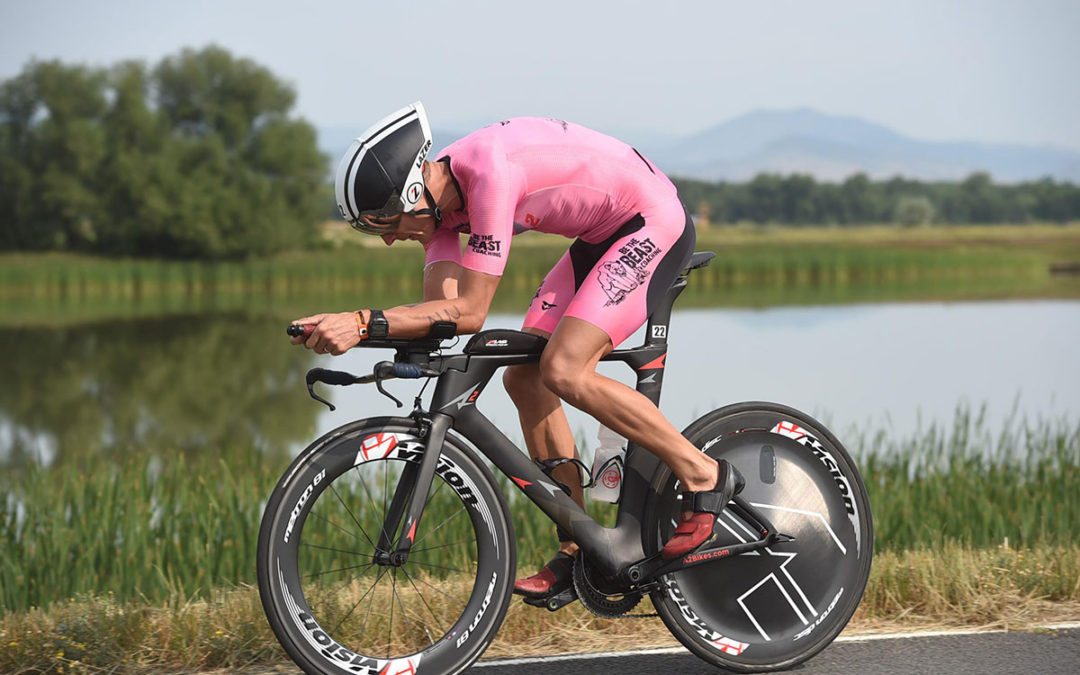When technique is mentioned in regards to triathlon, most people assume you’re talking about the swim, the run or nutrition planning. This makes sense because swimming is 80 percent technique (roughly speaking) and running also demands a great deal of time and energy spent on form concentration, as well as strength exercises done in the gym to create muscle memory for correct movements. Even transitioning quickly and efficiently requires technique, as does implementing a successful pacing strategy throughout a race.
Riding a bike successfully also requires a high degree of technique for efficiency (not just when it comes to cornering or riding a straight line).
Riding Requires Pedaling Technique, Just Like Running Requires Good Form
Riding a bike is fairly simple, compared to running or swimming. You push down on the pedal with one foot, relax that leg, and push down with the other. That’s about it. There is almost no side to side motion, your upper body is stationary, and going fast essentially comes down to pure fitness. While this statement is true to some degree, the degree to which it is not true adds up, especially over 56 or 112 miles.
You Will Take Around 15,000 Pedal Strokes in a Half Iron Distance Race
Let’s assume that your cadence averages 85 over a two hour ride. That means that every 60 seconds, you execute 85 pedal strokes. Multiple that by 120 minutes and you get 10,200 pedal strokes in two hours. Any tiny inefficiency in your pedal stroke will eventually catch up to you with that large of a number looming in the background. At best, an inefficiency will just cause you to go slower. At worst, it will cause a serious injury. There are two main types of cycling drills that can help teach you good pedaling technique: single leg drills and high cadence drills.
Single Leg Pedaling Drill
Pedal with one leg clipped in, one leg hanging out in the air or resting on the trainer. Imagine that you are scraping dog poop off of your shoe. Some people like to think of making a circle, but the fact is that you produce zero power on the upswing of a pedal stroke. The dragging approach to getting dog poop off the bottom of your shoe is a better way to think about how your pedal stroke should feel during single leg drills.
- Do 10×1 minute, switching out to your other leg every other minute. Don’t worry about your power, as it will be low.
- When you are ready for something more challenging, do 10×1 to 2 minutes up a 5-8 percent incline at a low cadence at a moderately harder effort.
High Cadence Drills
Having a high cadence allows for high power, but it takes time to become efficient at this. It can take many months of consistently doing high cadence drills and high cadence rides to increase your cadence. When doing high cadence drills, it is best to stay in your upper zone 2 or lower zone 3 (tempo).
- Do 10×1 minute high cadence (90-100 if you have a very low natural cadence or 100-120 if you have a moderate cadence) with one minute rests.
- Build up to 10×90 seconds cadence of 110-12- for the first 60 seconds, 130+ for 20 seconds building to all out in the final 10 seconds. Take three minutes rest.
Other Tips
- Keep your knees pistoning straight forward. Don’t let them cave in towards the top tube or bow outwards. If they do so uncontrollably, you may have a muscular imbalance or deficiency that needs to be addressed in the gym.
- Don’t bounce in the seat when you do high cadence drills. If you can’t keep from bouncing around, you need to lower your cadence for the time being.
- Excessive side to side movement is generally not necessary and is a waste of energy unless you are climbing out of the saddle or sprinting.
Good luck and happy training!
David
P.S. Need a purposeful training plan that takes the guesswork out of your training and gives you a purposeful structure to reduce risk of overtraining and injury? Check out our training plans for triathlons from sprint to IRONMAN® and running races from 5k to marathon.
—



